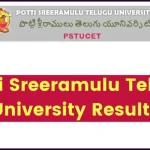Student Loan Forgiveness: Student loan debt is a pressing issue in the United States, affecting over 43 million borrowers with a collective debt exceeding $1.7 trillion. Managing student loans can feel overwhelming, especially if your payments stretch over decades. Fortunately, student loan forgiveness programs provide a way to reduce or completely cancel your debt if you meet specific requirements.

In this detailed guide, we’ll explore everything you need to know about these programs, including eligibility, the application process, common pitfalls to avoid, and tips for success.
Student Loan Forgiveness
| Aspect | Details |
|---|---|
| What is Student Loan Forgiveness? | A program that cancels part or all of your student loan debt for eligible borrowers. |
| Who Qualifies? | Those working in public service, teaching, or on income-driven repayment plans. Eligibility depends on the specific program. |
| Programs Covered | Public Service Loan Forgiveness (PSLF), Income-Driven Repayment (IDR) Forgiveness, Teacher Loan Forgiveness, and more. |
| Steps to Apply | 1. Identify eligibility. 2. Submit forms (e.g., PSLF Certification). 3. Verify employer qualification. 4. Track payments. |
| Important Deadline | For PSLF, ensure employment certification is submitted annually. |
| Official Resources | Visit the Federal Student Aid website for forms and guidelines. |
Student loan forgiveness programs provide a path to financial relief for borrowers who meet specific criteria. By understanding your options, staying diligent with paperwork, and using available tools, you can successfully navigate the process. For accurate and up-to-date information, always refer to the Federal Student Aid website.
Why Student Loan Forgiveness Matters
Student loans are often a barrier to financial stability, delaying milestones like buying a home, starting a business, or saving for retirement. Programs like Public Service Loan Forgiveness (PSLF) and Income-Driven Repayment (IDR) are designed to relieve financial burdens, particularly for those in public service or facing long-term repayment challenges. They not only benefit borrowers but also encourage service in critical fields like education, healthcare, and law enforcement.
Types of Student Loan Forgiveness Programs
1. Public Service Loan Forgiveness (PSLF)
PSLF is one of the most popular forgiveness programs. It is available to individuals working full-time in public service roles, such as government agencies or non-profit organizations. Key criteria include:
- Employment Requirement: Must work for a qualifying employer.
- Loan Type: Only Direct Loans are eligible.
- Repayment Plan: Must be enrolled in a qualifying repayment plan, such as an Income-Driven Repayment plan.
- Payments: Make 120 qualifying monthly payments (approximately 10 years).
Example:
Michael, a firefighter, has $60,000 in Direct Loans. He works full-time for a government agency and enrolls in the REPAYE plan, reducing his payments based on income. After 120 payments, his remaining balance is forgiven.
2. Income-Driven Repayment (IDR) Forgiveness
For borrowers enrolled in IDR plans, the remaining loan balance is forgiven after 20 or 25 years of qualifying payments, depending on the plan. Plans include:
- Revised Pay As You Earn (REPAYE)
- Pay As You Earn (PAYE)
- Income-Based Repayment (IBR)
- Income-Contingent Repayment (ICR)
Tip: IDR forgiveness may be ideal for borrowers with high debt relative to income.
3. Teacher Loan Forgiveness
Teachers who work in low-income schools or educational service agencies may qualify for forgiveness. Benefits include:
- Up to $17,500 for math, science, or special education teachers.
- Up to $5,000 for other subjects.
Example:
Sarah, a special education teacher, teaches in a low-income school for five consecutive years. She applies for forgiveness and receives $17,500 off her loan balance.
4. Total and Permanent Disability Discharge
If you are unable to work due to a disability, you may qualify for Total and Permanent Disability (TPD) discharge. This program completely cancels your federal student loans.
Student Loan Forgiveness Guide to Applying for Loan Forgiveness
Step 1: Check Your Loan Type
Only certain types of federal loans are eligible for forgiveness programs. Use the National Student Loan Data System (NSLDS) on studentaid.gov to verify your loan type.
Step 2: Identify the Right Forgiveness Program
Match your career or financial situation with the relevant forgiveness program. For example:
- If you work for a non-profit, consider PSLF.
- If you’re a teacher, explore the Teacher Loan Forgiveness Program.
- For long-term repayment challenges, choose an IDR plan.
Step 3: Enroll in a Qualifying Repayment Plan
For most programs, you must enroll in a specific repayment plan. For PSLF, Income-Driven Repayment plans are mandatory.
Step 4: Submit Required Forms
- PSLF: Submit the PSLF Certification Form annually.
- IDR: Complete the Income-Driven Repayment Plan Request form.
- Teacher Loan Forgiveness: File the Teacher Loan Forgiveness Application after completing the service requirement.
Step 5: Track Your Progress
Use tools like the PSLF Help Tool to monitor qualifying payments and ensure your employer and payments meet the program’s requirements.
Common Misconceptions About Loan Forgiveness
Myth 1: Forgiveness Is Automatic
Fact: Borrowers must apply and submit necessary documentation. There’s no automatic enrollment.
Myth 2: All Jobs Qualify for PSLF
Fact: Only full-time employment with government or non-profit organizations qualifies.
Myth 3: Private Loans Can Be Forgiven
Fact: Forgiveness programs apply only to federal student loans, not private loans.
Tips for Success
- Stay Organized: Maintain a record of payments, employer certifications, and correspondence with your loan servicer.
- Set Reminders: Annual certifications and timely payments are crucial.
- Be Proactive: Use official resources like studentaid.gov to avoid scams.
FAQs About Student Loan Forgiveness
1. Is student loan forgiveness taxable?
Currently, forgiven loans under federal programs are tax-free through 2025, thanks to the American Rescue Plan.
2. What happens if I leave my job?
For PSLF, only payments made while working for a qualifying employer count.
3. Can I apply for multiple programs?
Yes, but benefits from some programs, like Teacher Loan Forgiveness, may reduce eligibility for others, like PSLF.
4. How long does it take to process forgiveness?
Processing times vary by program and servicer, but PSLF reviews can take months after meeting the requirements.









